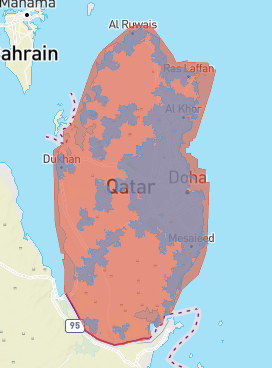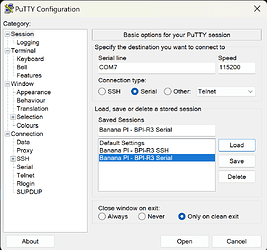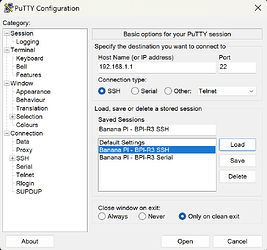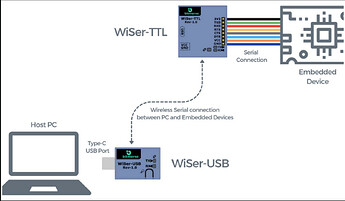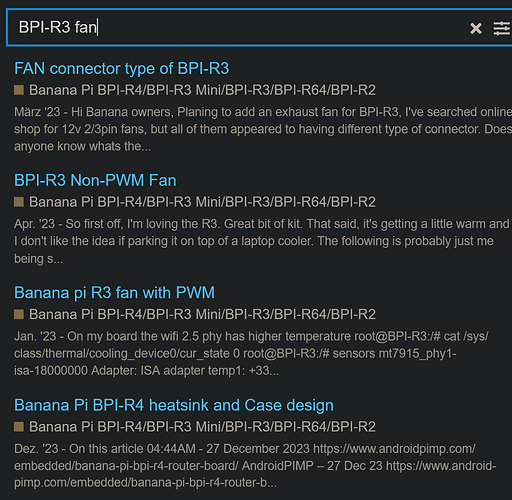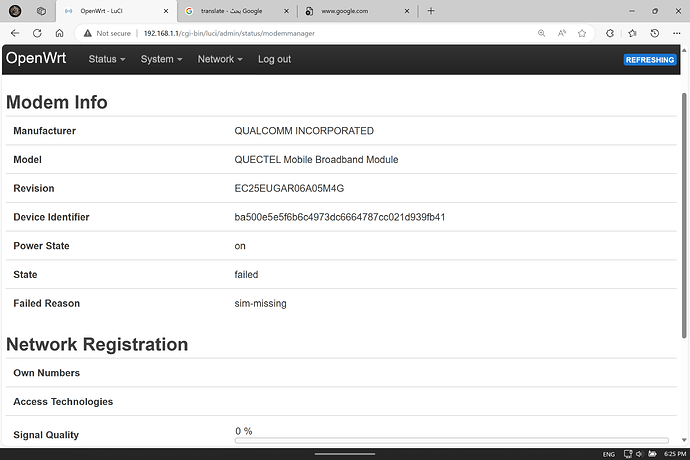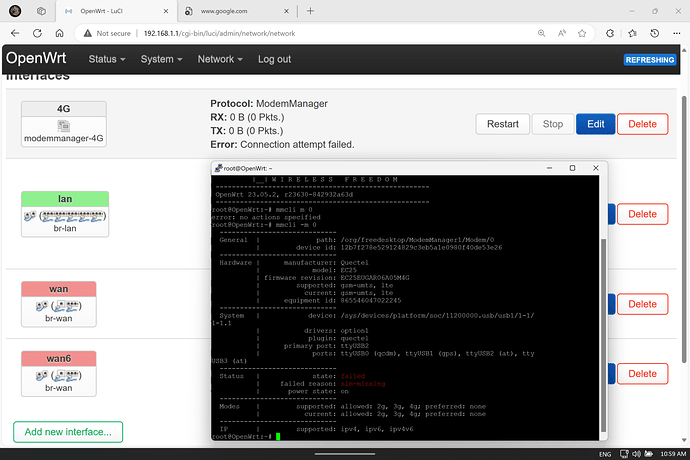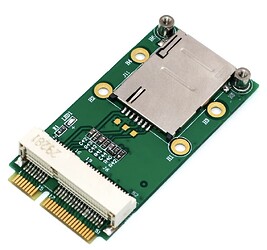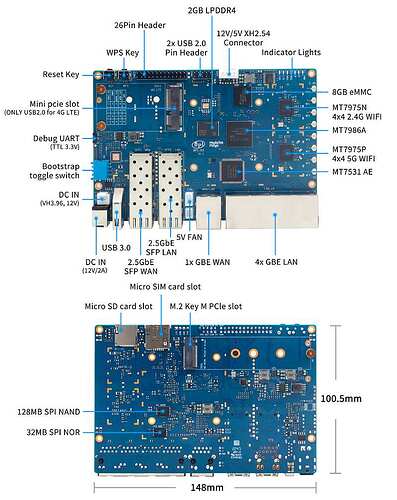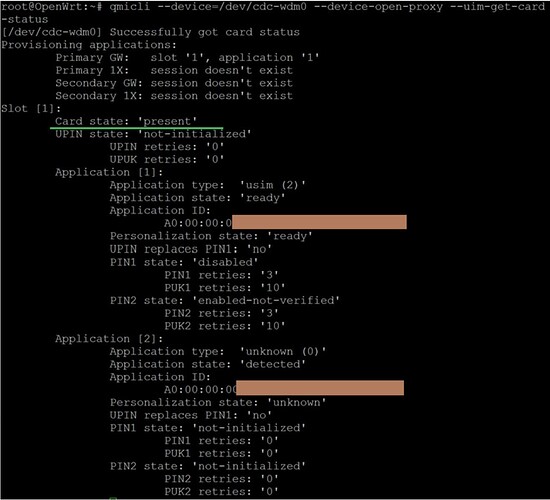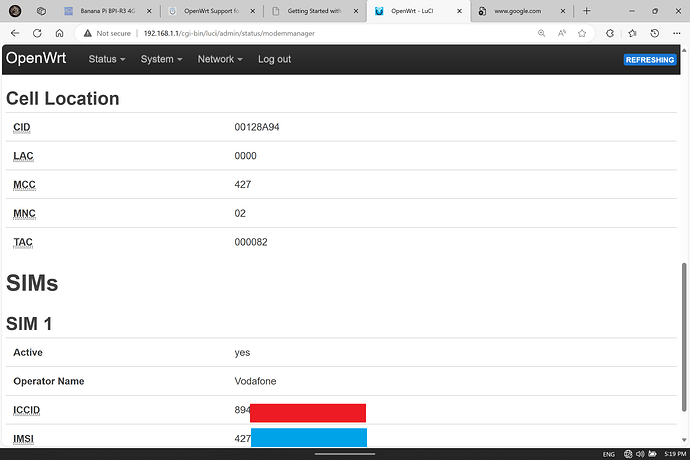I am a Zimaboard Raspbrrypi user and I decided to run Banana pi -R3, but I was shocked by downloading the Openwrt and the difficulty I faced during this process. In the end, I did not succeed. Other than that, I had to connect Banana to USB-TTL all the time so that I could get the Luci interface. The biggest shock is that There is no video explaining in detail how to install Openwrt as of writing this post. Please help me with that my device is Banana Pi R3 with 4G module and 512GB NVME
Today, I have not so much time.
First source is the BPI wiki:
https://wiki.banana-pi.org/Main_Page
And more important:
https://wiki.banana-pi.org/Getting_Started_with_BPI-R3
Also very interesting for start:
https://wiki.fw-web.de/doku.php?id=en:bpi-r3:start
Overview:
https://wiki.banana-pi.org/Banana_Pi_BPI-R3
!!! Firmware !!!
https://firmware-selector.openwrt.org/
You can also look on OpenWRT-Forum:
For your “connection problem” → I use “PuTTY” for connection:

Serial connection:
The “COM?” - Port has to be right! Look for in your system!
Speed: 115200
After you have the system run and W-Lan is ON you can connect your PC to the Router and connect with PuTTY over SSH:
Profils can be saved in PuTTY. You don’t have to write the information again and again … .
If you have a unstable SSH connection. There are good or more comftable possibilities:
For wireless (not cheap):
or
installing a debug board than you can use a long usb-C cable:
For
4G
and
512GB NVME
First read the the topics in this Forum! ![]() Everything what you are doing is a own projekt!
Everything what you are doing is a own projekt!
I have no experiences with NVME on R3 but for 4G you have to install some packages. One of them is modemmanager … ! Be aware that R3 is connecting mini PCI-E over USB 2.0.
You have to know how fast the connection should be. You may want to use usb 3.0 connection on the front?
Investing in the future → buying a M.2 modem?
For the mini PCI-E i needed a mini pci-E adapter with additional sim card slot. Because normal sim slot did not recognize my sim card … everything on the R3 is a journey … how long the journey is depends on luck and your knowledge ![]() .
.
Good luck!
It’s true that there is too much even contradicting information, especially also because SinoVoip/BananaPi has their own in-house variant of OpenWrt and it is very confusing because it is very different from actual OpenWrt from openwrt.org. Imagine that RaspberryPi foundation forked Debian and then just kept calling it Debian instead of changing the name to Raspbian – this is what happened here and keeps happening. On banana-pi.org they write all documentation for that fork, which is based on a very old and heavily modified version of OpenWrt. Using it is not recommended as it is incompatible with all the packages from openwrt.org and also seems to be unmaintained.
The good thing is that using official OpenWrt is actually very easy, much easier than using the semi-proprietary fork of SinoVoip which has many different images. For official OpenWrt on the BPi-R3 you should always start with this image: http://downloads.openwrt.org/releases/23.05.2/targets/mediatek/filogic/openwrt-23.05.2-mediatek-filogic-bananapi_bpi-r3-sdcard.img.gz
gunzip this file and write it to a microSD card, e.g. using dd in case you are using a real operating system or using 3rd-party software like Balena Etcher if you are on Windows.
Stick that into the R3, set the dip switches to boot from SD card, and the device will come up with LuCI pre-installed and everything usually needed to use it as router and AP.
If you want to install OpenWrt to the on-board eMMC and/or SPI-NAND and boot from that, you can either use the bootloader menu (if you connect via USB-TTL) or follow instructions provided here: [OpenWrt Wiki] Sinovoip BananaPi BPi R3 V1.0, V1.1
thank you dangowrt it’s work now thank you so much you are the most active & helpful advisor here now how to active NVM 512GB on it, the fan and 4G LTE Cat4 module EC25-EU mini pcie ? thanks again.
Hello,
it would be better if you describe your problem ![]() .
.
For the most problems, there are still chats!
You relly have to read and search!

→ then you will get the information that there are fans with PWM and without PWM? What is PWM? Is there an official Fan? All the information you will get there.
This is a developemnt board! If I would be a developer I could check things out with it! Because I’m not a developer, I can develop myself with the board!
The OpenWRT version you installed has not all packages. Somtimes you have to be install some additional packages (for example running a 4G modem → modemmanager):
I did not know your background → did you ever use openWRT? If this is your first board, you will have to learn much more. But this is not a problem!
What you read in the chats is a development process. The information on the top are sometimes not working anymore because the software has changed!
This here is not perfect! I would be glad, that “we” could write our own Wiki. With big overview tables of compatible hardware. And instructions for get it run! But there is no such think. This is a information jungle ![]() .
.
So, go in the special chats and ask questions! I will be glad to hear from you!
I also run the EC25 EUX. Chat:
So, modem installing + antenna installing + installing modem manger? Working or not working? Are there achat for the problem: → Yes: write a comment → No: start a new chat!
It should work with modemmanager! https://openwrt.org/docs/guide-user/network/wan/wwan/modemmanager
Official PWM Fan?:
Chat:
control the fan is solved by going to LUCI → Startup →
Copie that inside for 50°C:
echo 50000 > /sys/class/thermal/thermal_zone0/trip_point_4_temp
echo 50000 > /sys/class/thermal/thermal_zone0/trip_point_3_temp
echo 50000 > /sys/class/thermal/thermal_zone0/trip_point_2_temp
echo 50000 > /sys/class/thermal/thermal_zone0/trip_point_1_temp
i install opkg update && opkg install kmod-usb-serial kmod-usb-net kmod-usb-serial-wwan kmod-usb-serial-option kmod-usb-net-qmi-wwan kmod-usb-net-cdc-mbim
and luci-proto-modemmanager
but i have missing simcard i change 6 simcard but still the issue thanks in advanced
That is a common problem. See, if you would write this problem in the right chat, the others could found it:
I solved it with an additional adapter:
https://de.aliexpress.com/item/1005005142821111.html.
→ You do not have to write a progrmm for this! Just do the adapter inside:
There are also EC25 cellular modems with an included sim card slot available:
https://de.aliexpress.com/item/32978947711.html. https://de.aliexpress.com/item/1005004710244705.html.
I did not test them! Because I use the adapter … and I wantet to buy a 5G RedCap modem from Quectel.
I will not buy the RG255C or RM255C because there are based on Qualcomm Chipset X325.
I want to wait for the 5G RedCap from Quectel RG255G/RM255G or Fibocom FM330 which are based on T300 from MediaTek. But there are still not released … .
You need to instruct the modem to choose the correct SIM slot. Usually there are two physical connections for SIM cards and maybe one or several virtual slots for eSIM. The physical slot of the BPi-R3 works fine, I’ve tested it with the EC-25, you do not need any extra adapter what-so-ever.
I think, dangowrt do’s not speak about the pysical sim slot! There is no version of R3 who has more than one sim slot. I will check it!
The only think to check I used was this (with adapter):
But I just looked from the “rooter site”. I may have to check what the modem says?
I studied the whole dokumentation on Quectel EC25 … but for this I did not look for.
Access Technologies: umts
Looks like the modem is connecting only with 3G and has very low signal quality. I would guess that the antennas are not connected properly.
Just checked on Vodafone Qatar | Check your coverage | vodafone.qa and there is LTE everywhere, so you should get LTE with probably around ~ 50 MBit/s realistic throughput pretty much everywhere unless the network is very overloaded.
